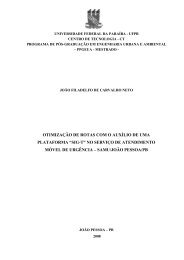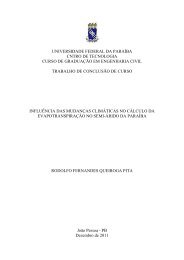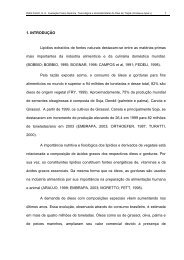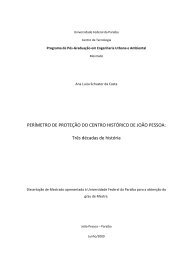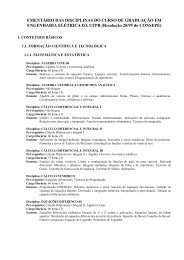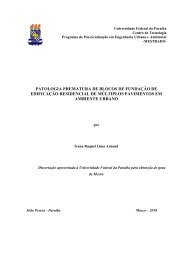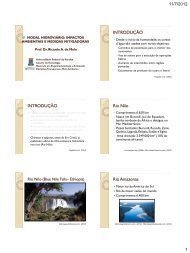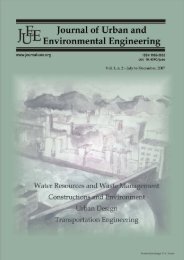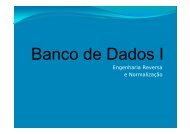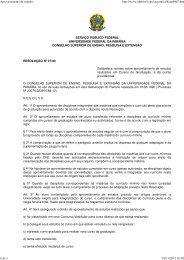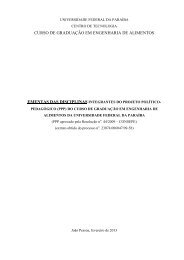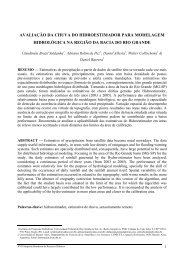editorial team
editorial team
editorial team
You also want an ePaper? Increase the reach of your titles
YUMPU automatically turns print PDFs into web optimized ePapers that Google loves.
Ravindran and Nagendran<br />
30<br />
INTRODUCTION<br />
Ecology is being associated with the growth of any<br />
industry, organization or even a nation and it’s not still a<br />
low key issue and its sustainability had become the buzz<br />
word of developing world and it’s evident in many<br />
issues. Sustainable development is a pattern of resource<br />
use that aims to meet human needs while preserving the<br />
environment so that these needs can be met not only in<br />
the present, but in the indefinite future. The term was<br />
used by the Brundtland Commission which coined what<br />
has become the most often-quoted definition of<br />
sustainable development as development that “meets the<br />
needs of the present without compromising the ability of<br />
future generations to meet their own needs.” As early as<br />
the 1970s “sustainability” was employed to describe an<br />
economy “in equilibrium with basic ecological support<br />
systems”. Ecologists have pointed to the “limits of<br />
growth” and presented the alternative of a “steady state<br />
economy” in order to address environmental concerns<br />
(Van den Bergh & Nijkamp, 1991).<br />
Sustainable development implies using renewable<br />
natural resources in a manner which does not eliminate<br />
or degrade them, or otherwise diminish their usefulness<br />
for future generations. It further implies using nonrenewable<br />
(exhaustible) mineral resources in a manner<br />
which does not unnecessarily preclude easy access to<br />
them by future generations. Sustainable development<br />
also requires depleting non-renewable energy resources<br />
at a slow enough rate so as to ensure the high<br />
probability of an orderly society transition to renewable<br />
energy sources. Sustainable development ties together<br />
concern for the carrying capacity of natural systems<br />
with the social challenges facing humanity.<br />
Sustainable development is defined as a pattern of<br />
social and structured economic transformations (i.e.<br />
development) which optimizes the economic and<br />
societal benefits available in the present, without<br />
jeopardizing the likely potential for similar benefits in<br />
the future. A primary goal of sustainable development is<br />
to achieve a reasonable and equitably distributed level<br />
of economic well-being that can be perpetuated<br />
continually for many human generations. The field of<br />
sustainable development can be conceptually divided<br />
into four general dimensions: social, economic,<br />
environmental and institutional. The first three<br />
dimensions address key principles of sustainability,<br />
while the final dimension addresses key institutional<br />
policy and capacity issues<br />
A nation’s growth starts from its educational<br />
institutions, where the ecology is thought as a prime<br />
factor of development associated with environment.<br />
Educational institutions nowadays are becoming more<br />
sensitive to environmental factors and more concepts<br />
were being introduced to make them eco friendly. To<br />
preserve the environment within the campus, there are<br />
various viewpoints that several Universities are<br />
applying in order to tackle with their environmental<br />
problems such as promotion of the energy savings,<br />
recycle of waste, water reduction, etc. Eco- Campus is<br />
one such concepts or principles introduced to make the<br />
Universities environmentally sustainable.<br />
Sustainable development in campuses<br />
Eco-campus or Ecological Campus has its meaning in<br />
itself. The meaning of eco-campus has been expressed<br />
in its targets and objectives. By all means, eco-campus<br />
means “environmental sustainability within the school”.<br />
School is a center for generating of education;<br />
moreover, it is also a research center where the students<br />
and teachers are attempting to develop the best strategy<br />
for achieving their purposes. Due to this reason, the<br />
development of eco-campus has been pointed out and<br />
established recently.<br />
Eco-campus concept mainly focuses on the efficient<br />
uses of energy and water; minimize waste generation or<br />
pollution and also economic efficiency. Eco-campus<br />
focuses on the reduction of the University’s contribution<br />
to emissions of green house gases, procure a cost<br />
effective and secure supply of energy, encourages and<br />
enhance staff and student energy issues, also promotes<br />
personal action, reduce the University’s energy and<br />
water consumption, reduce wastes to landfill and<br />
integrate environmental considerations into all contracts<br />
and services considered to have significant<br />
environmental impacts.<br />
While these various measures are promoted<br />
synthetically and systematically, an “Environmental<br />
Management System” is introduced, in order to realize<br />
certainly the “Eco-campus" which considered<br />
environment, and clarifying the posture of a University<br />
to society. It aims at establishing the organization which<br />
may be evaluated objective. Most recently, the concept<br />
of cleaner production (CP) has entered the global<br />
environmental arena. Cleaner production fits within<br />
pollution prevention's broader commitment toward the<br />
prevention rather than the control of pollution.<br />
Cleaner production means the continuous application<br />
of an integrated preventive environmental strategy to<br />
processes and products to reduce risks to humans and<br />
the environment. For production processes, cleaner<br />
production includes conserving raw materials and<br />
energy, eliminating toxic raw materials, and reducing<br />
the quantity and toxicity of all emissions and wastes<br />
before they leave a process.<br />
Pollution prevention is an approach which can be<br />
adopted within all sectors, whether it is a small service<br />
operation or a large industrial complex. Cleaner<br />
production, on the other hand, directs activities toward<br />
production aspects. Unlike in the past when pollution<br />
was simply controlled, P2 and CP programs attempt to<br />
reduce and/or eliminate air, water, and land pollution.<br />
Therefore, the P2 and CP approaches benefit both the<br />
Journal of Urban and Environmental Engineering (JUEE), v.4, n.1, p. 29-36, 2010



